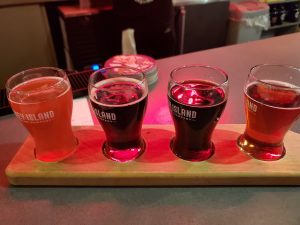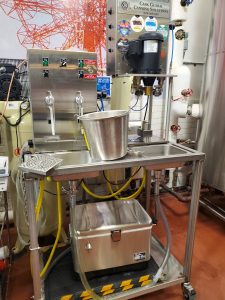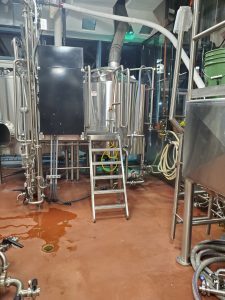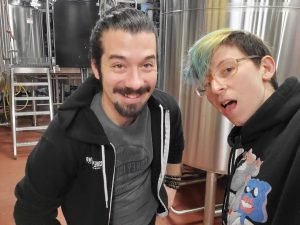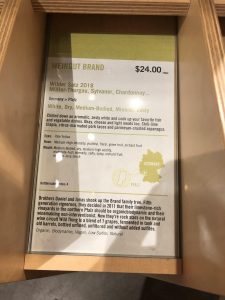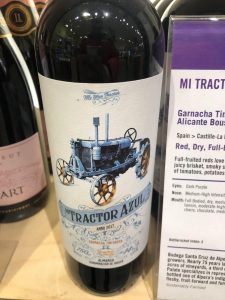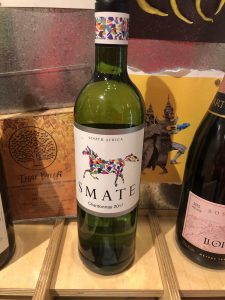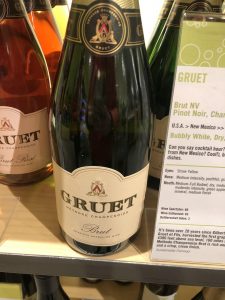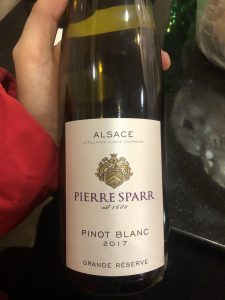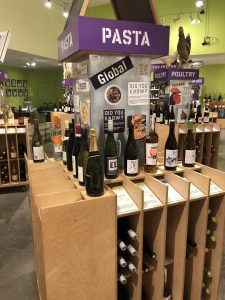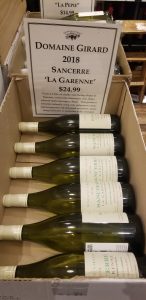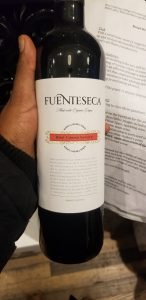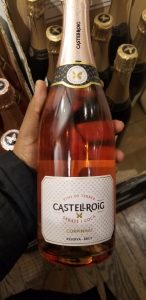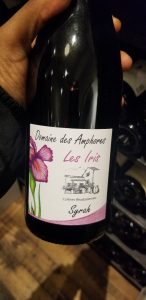Valor Teytelman
November 30, 2019
Professor Goodlad
Coney Island Brewery
Coney Island, better known as “the playground of the world’, and its sister site, Coney Island brewery, where the playground of the world does its drinking, is quite warm and inviting. Conversations overheard in the bar area include previous mermaid parades, loving the fact that Coney Island was built on the history of the “freak show” and really trying to keep that feeling alive.
The tour of the brewery was led by the bartender, Keith, a longtime regular of the bar, that one day , to his surprise, was asked if he wanted to work at his favorite hangout. The brewing process is as follows: First, there are a selection of grain racks from honey rye to wheat. Once chosen, the grain goes through the miller to separate the husk from the grain, which imparts much of the flavor in the beer. Grist, which is the byproduct of the milling process, is how flour is come by. The grains are then mixed with hot water in a separate tank, to make Mash tun, better known as just “mash”. Then the wort, the sugar-rich substance which is like oatmeal in consistency, is filtered from the mash.
Hops, which is a cousin of the Marijuana plant and grows on something called a Bine, is then added in a separate tank. Hops are bitter by themselves but add balance to the sweetness from the sugary grain. Coney Island Brewery sources their hops from Ashbury Park, in Upstate New York, however many of their hops also come from a distributor in Connecticut. The beer is then kettled, and this is the step in the process where they add all adjunct (or additional) flavors- which may include juices, wood chips, and so on. It is then brought up to 212 degrees F, to get all the flavor out of the hops. The only thing missing out of the equation now is the addition of yeast, which would be killed at such a high temperature, so a radiator, which ironically does the opposite of what a normal radiator does, cools the beer down to 50 degrees F, so the yeast can multiply.
The addition of these adjuncts are what separate the market of beer consumption. “The craft segment consists of premium-priced beers that appeal to consumers who are more highly educated and affluent–not your typical “Saturday-night 6-pack” c-store shoppers. These consumers tend to switch brands and flavors within the craft beer segment, rather than developing a loyalty to one brand, perhaps an indicator that experimentation is a key motivator for the craft beer drinker. It’s the classic conundrum: Even though craft beers offer the retailer a much higher margin than most domestic premiums, the limited space of the average c-store does not allow for sufficient brands to suit the fancy of the beer switcher looking to try something else.” (3)
The beer then spends about 2 hours in a fermentation tank and is aptly named “baby beer” at this stage. This is because the beer still needs to go through the filtration system, though not all beers do, depending on whether the brewer wants to create a “hazy” beer or not. The beer is then transferred into Bright Tanks for conditioning. The beer is then ready to be racked, which they do by hand, kegged and tapped.
Boston Beers, which is owned by Sam Adams (known teasingly to the employees as “Uncle Sam” because they pay their bills) paved the way for the renovation of their new bar, acquired in 2013. The remnants of the old 50-person-limit bar is still haunting the newly renovated space through a 2’ by 1’ white spot on the floor where it used to sit. Boston Beers’ “2013 financial projection include[d] estimated brand investments attributable to existing Alchemy and Science projects of between $4 million and $6 million and capital investments of between $7 million and $10 million, which include the brand acquisition cost of the Coney Island Brewery.” (1) Boston Beers supplement some of Coney Island’s more popular beers (Mermaid IPA, Seas the Day IPL, and Tunnel of Love Watermelon Wheat) for commercial sales in a much larger brewery in Pennsylvania. Alan Newman, chief executive of Alchemy & Science and John Carpenter, A & S brewmaster “used a huge amount of watermelon juice in [Watermelon Wheat], and it was a challenge,” Mr. Carpenter says. “But we found a company that made a beautiful high-quality watermelon juice and found a way to concentrate it for use in brewing.”(2) The mildly bitter rind flavor “rounds out a wheat beer formulation made from malted and unmalted wheat.” (2)
I tasted 4 beers in their flight package- each around 3 dollars. From lightest to darkest, the “Barrel Aged Last Stop” was orange in appearance with a light lace, smelled of orange rinds and overripe apple, had a dry mouthfeel and a nitrous-bubble feel on the palate, and brought an incredibly high ABV content of 10.5%. Second, the “Blueberry Boo-liner”, was dark amber in appearance with a medium lace, smelled like a toilet, but had a tart, rounded, clean taste with low ABV, and was the most drinkable out of the group. Third, the “Boardwalker Black Lager” had a large lace and a light coffee appearance with the taste of mocha water and a dry, bitter but well-rounded taste and notes of cedarwood. The last beer was called “Half-Caked (Barrel-Aged)” and looked like Black Coffee, had barely any lace and smelled like liquorice and Yager Meister. It tasted better than it smelled, but was syrupy and not drinkable, in my opinion.
Source Citations:
- “Boston Beer Reports 3Q 2013 Results.” Entertainment Close-up9 Nov. 2013. Business Insights: Global. Web. 30 Nov. 2019.
URL
http://bi.gale.com.citytech.ezproxy.cuny.edu/global/article/GALE%7CA348585520/bca4d46d26163556f3651728a73fcc0d?u=cuny_nytc
- “Coney Island rolls out first seasonal beer.” Modern Brewery Age28 Apr. 2014: 1. Business Insights: Global. Web. 30 Nov. 2019.
URL
http://bi.gale.com.citytech.ezproxy.cuny.edu/global/article/GALE%7CA370031212?u=cuny_nytc
- “Craft beers: the little segment that could. (ACNielsen Presents-Convenience Corner).” Beverage Aisle, 15 July 2003, p. 28. Gale Academic Onefile, https://link.gale.com/apps/doc/A105884188/AONE?u=cuny_nytc&sid=AONE&xid=70bb9c49. Accessed 30 Nov. 2019.

